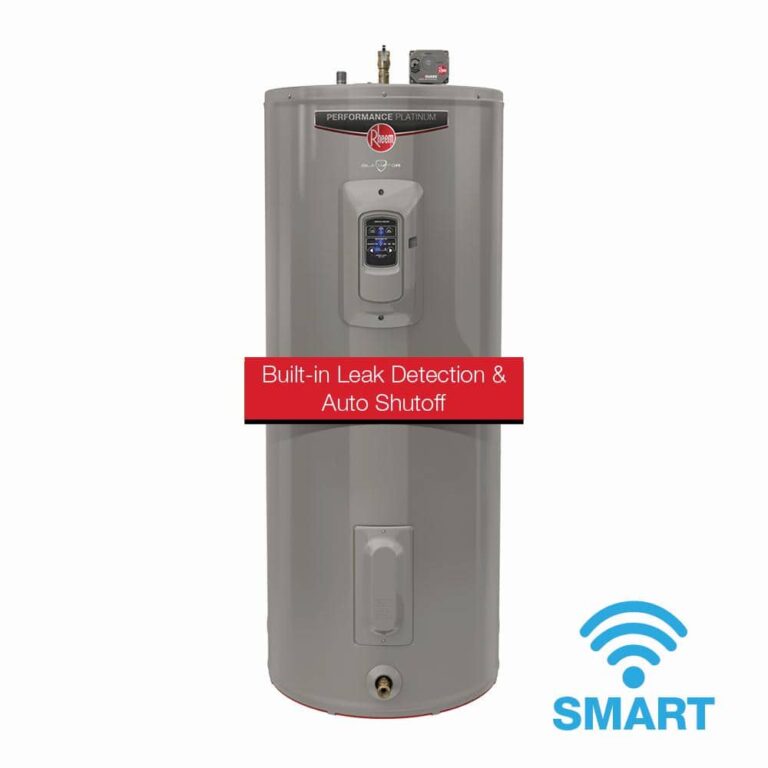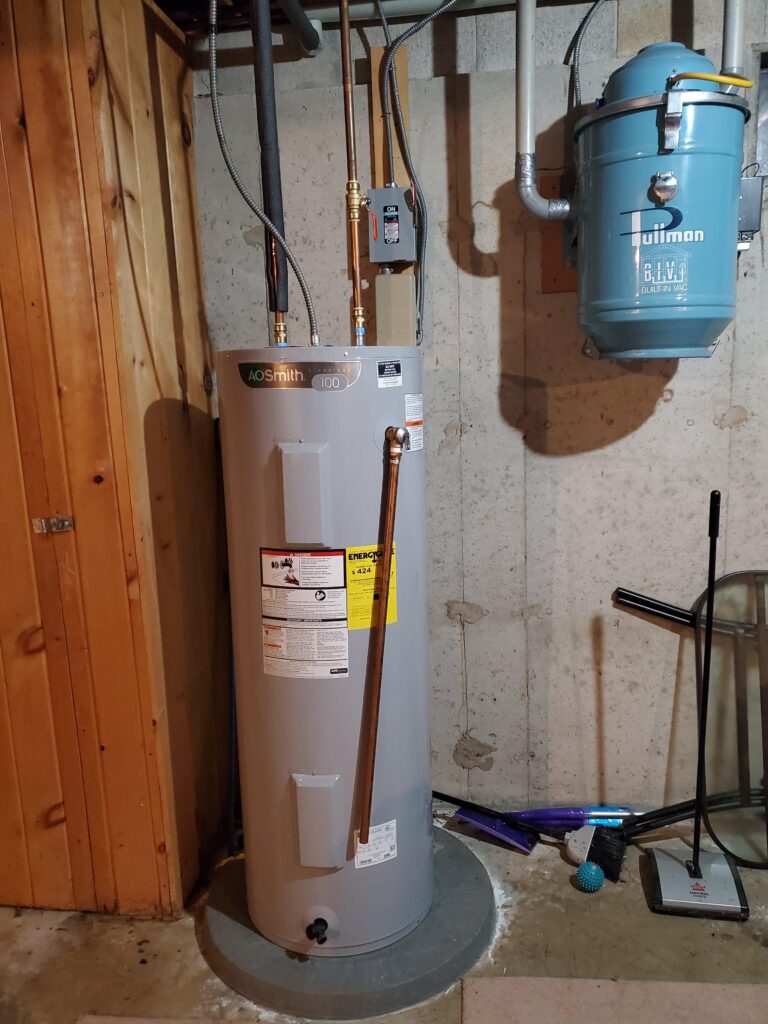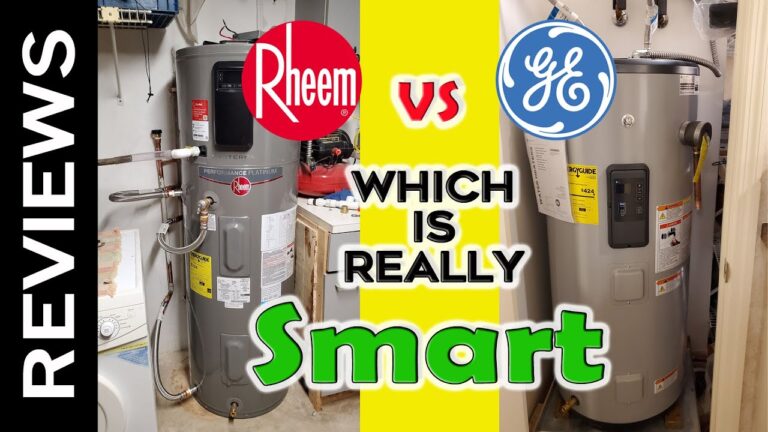Are you dealing with a Rheem water heater that’s just not performing as it should? If the water isn’t getting hot enough, the problem might be simpler than you think.
Often, a low thermopile voltage is to blame, and it can be a real headache when you’re looking for a quick shower or trying to wash the dishes. But don’t worry, because understanding and fixing this issue might be easier than you imagine.
You’ll discover what thermopile voltage is, why it matters, and how a low voltage can affect your water heater’s performance. We’ll guide you through troubleshooting steps and solutions that can help you get your water heater back on track. So, if you’re tired of lukewarm water, keep reading to find out how you can take control of your comfort and convenience.
Understanding Thermopile Functionality
Grasping how a thermopile works is crucial for Rheem water heaters. It converts heat into electrical energy to ignite the burner. When thermopile voltage is low, the water heater may not function properly.
A thermopile consists of multiple thermocouples. These are connected in series to generate more voltage. This energy powers the control board, ensuring safe operation.
Role In Water Heaters
The thermopile plays a vital role in water heaters. It provides the necessary voltage to ignite the burner. This ensures the heater produces hot water efficiently.
Without adequate voltage, the heater fails to start. A low voltage can indicate issues with the thermopile or other components. Regular checks can prevent sudden failures.
Key Components
A thermopile consists of several key parts. The thermocouples convert heat into electrical energy. These are often made of dissimilar metals.
Each thermocouple generates a small voltage. When combined, they produce enough energy for the heater. The control board relies on this energy to function properly.
Ensuring these components are in good condition is essential. It guarantees the heater works efficiently and safely.

Credit: www.pinterest.com
Signs Of Low Thermopile Voltage
Rheem water heaters are known for their reliability. Yet, even the best systems can face issues. One common problem is low thermopile voltage. This can impact your water heater’s function. Understanding the signs can help you address the issue quickly.
Common Symptoms
Low thermopile voltage has clear signs. The pilot light might flicker. Sometimes, it won’t stay lit at all. You might notice water isn’t as hot. These are key indicators of low voltage.
Impact On Water Heater Performance
Low voltage affects performance significantly. Water may take longer to heat. The heater might shut down unexpectedly. This can be frustrating during daily routines. Addressing these issues can restore normal function.
Causes Of Low Voltage Issues
Low voltage in Rheem water heater thermopiles often stems from loose connections or faulty wiring. Dust or debris accumulation can also affect voltage levels, leading to operational issues. Regular maintenance helps prevent these problems and ensures efficient performance.
If you’re dealing with low voltage issues in your Rheem water heater thermopile, you’re not alone. Many homeowners encounter this problem, and understanding the causes is the first step towards a solution. Let’s dive into the common reasons behind these low voltage issues and see how you can tackle them effectively.Faulty Connections
Faulty connections are often the culprits behind low voltage in thermopiles. Loose or corroded wires can interrupt the electrical flow, leading to an insufficient voltage output. Take a moment to inspect the connections. Are they tight and free of corrosion? If not, tightening or cleaning them might be your quick fix.Thermopile Wear And Tear
Over time, thermopiles can wear out. This wear and tear can decrease their efficiency, causing a drop in voltage. Think of it like an old pair of shoes—they just don’t work as well as they used to. If your thermopile is old, consider replacing it to restore your water heater’s performance.Environmental Factors
Environmental factors can also play a significant role in low voltage issues. Extreme temperatures or humidity can affect the thermopile’s function. Are you in a particularly cold or damp area? Protecting your water heater from these elements might prevent future problems. Have you ever considered how these factors might be impacting your water heater’s efficiency? Taking a few simple steps to address these causes can save you from bigger headaches down the line.Troubleshooting Low Voltage
Experiencing low voltage in your Rheem water heater thermopile can be frustrating. It might lead to inefficient heating or even no hot water. Troubleshooting these issues can save time and restore comfort at home. This guide offers simple steps to diagnose and resolve low voltage problems. Let’s dive into the process of troubleshooting low voltage.
Initial Inspection Steps
Begin by turning off the water heater’s power supply. Ensure your safety first. Check the area around the water heater for any visible damage or leaks. Look for loose wires or debris that might affect performance. Examine the pilot light to see if it’s burning steadily. A flickering or extinguished flame may indicate issues.
Testing Voltage Levels
Use a multimeter to test the thermopile voltage. Set the multimeter to DC volts. Connect the leads to the thermopile terminals. Check the reading. A healthy thermopile should show around 750 millivolts. If your reading is below this, it indicates low voltage. This could cause heating issues.
Identifying Connection Problems
Inspect all wire connections for tightness and corrosion. Loose or corroded connections can lead to low voltage. Tighten any loose connections using a screwdriver. Clean corroded terminals with a wire brush. Recheck the voltage after securing the connections. If problems persist, consider consulting a professional.
Repair And Replacement Solutions
Experiencing low thermopile voltage in your Rheem water heater? Find effective repair and replacement solutions for optimal performance. Ensure consistent hot water by addressing this common issue promptly and efficiently.
Dealing with a Rheem water heater thermopile voltage issue can be frustrating, especially when you’re relying on warm water for your daily needs. The problem often lies in the thermopile’s voltage being too low, which can disrupt the heater’s performance. Fortunately, there are practical solutions you can explore to repair or replace the necessary components and get your water heater back on track. Whether you’re comfortable with a DIY approach or prefer professional help, these solutions cover all bases.Repairing Connections
Check the connections first. Loose or corroded connections can be a common cause of low thermopile voltage. Make sure all wires are tightly secured and free from rust. A simple fix like tightening a loose connection can sometimes solve the problem entirely. Clean any visible corrosion with a suitable cleaner. It’s surprising how often this straightforward step can restore the normal function of your water heater.Replacing The Thermopile
If cleaning and tightening the connections don’t work, it might be time to replace the thermopile. This task might seem daunting, but with the right tools and guidance, it’s manageable. Start by turning off the gas supply and disconnecting the old thermopile. Carefully install the new one, ensuring all connections are secure. Make sure to choose a replacement that matches your heater’s specifications. Investing in a quality thermopile can prevent future issues and ensure efficient performance.Professional Assistance
Sometimes, the best solution is to call in a professional. If you’re unsure about handling the repairs yourself, it’s okay to seek help. A qualified technician can quickly diagnose and fix the problem. They bring expertise and tools that might not be readily available to you. Consider whether the time and effort saved by hiring a professional outweigh the cost. In many cases, professional assistance can provide peace of mind and a guarantee of the repair’s longevity. Have you ever tackled a thermopile replacement on your own? Or did you find peace of mind with professional help? Share your experiences and insights in the comments below! Your story might just help someone else facing the same issue.
Credit: www.youtube.com
Preventive Maintenance Tips
Preventive maintenance for your Rheem water heater ensures its longevity. It also keeps its performance efficient. Regular care can prevent issues like low thermopile voltage. This guide provides essential tips to maintain your heater effectively.
Regular Inspection Routines
Inspect your water heater monthly. Look for any signs of wear or damage. Check the pilot light for a steady blue flame. A yellow or flickering flame indicates issues. Ensure the thermopile is clean and free from debris. A dirty thermopile can cause low voltage.
Listen for unusual noises. These may indicate sediment buildup. Drain your tank regularly to prevent this. A clean tank improves efficiency. It also prolongs the heater’s life.
Maintaining Optimal Conditions
Keep the area around your water heater clear. Remove any objects or clutter nearby. Proper ventilation is crucial for efficient performance. Check the temperature setting. A setting of 120 degrees Fahrenheit is often ideal. It prevents overheating and energy waste.
Test the pressure relief valve annually. Lift the lever and let it snap back. Water should flow freely when you do this. If not, the valve may need replacement.
Consider professional servicing once a year. A technician can spot issues you might miss. Regular professional maintenance ensures optimal functioning. It also helps in maintaining warranty conditions.
When To Seek Professional Help
Experiencing low thermopile voltage in your Rheem water heater can signal a need for professional assistance. Persistent voltage issues might indicate deeper electrical problems requiring expert diagnosis and repair. Protect your heater’s efficiency by consulting a technician promptly.
When it comes to addressing a Rheem water heater with low thermopile voltage, understanding when to call a professional can save you time, money, and frustration. While some minor issues can be fixed with a DIY approach, there are instances where expert intervention is essential. Let’s explore those scenarios and why professional help is often the best course of action.Complex Repair Scenarios
Certain situations require a deep understanding of water heater mechanics that only a trained technician can provide. If your water heater continues to show low voltage readings despite replacing batteries or resetting it, there may be underlying issues at play. Components like the gas valve or control board might be malfunctioning, requiring intricate repairs that go beyond basic troubleshooting. Consider a situation where the thermopile voltage fluctuates erratically. This could indicate a problem with the gas supply or a faulty thermopile itself. Such scenarios not only demand precision but also specialized tools and equipment to diagnose and fix the issue effectively.Safety Considerations
Your safety should always be the top priority when dealing with gas appliances. Handling gas lines or electrical connections without proper knowledge can pose significant hazards. Professional technicians are trained to manage these risks and ensure safe operation of your water heater. Imagine trying to adjust a gas line and accidentally causing a leak. This could lead to dangerous gas buildup, putting you and your family at risk. Professionals have the expertise to handle these situations safely, minimizing any potential threats. Isn’t peace of mind worth the small investment in professional help? Consider the potential dangers and weigh them against the cost of a service call. Sometimes, the assurance that the job is done correctly is invaluable. In conclusion, while it might be tempting to attempt a DIY fix, recognizing the limits of your skills can prevent bigger issues down the road. Whether it’s a complex repair or a matter of safety, knowing when to seek professional help is crucial for maintaining the efficiency and longevity of your Rheem water heater.
Credit: ciclica.eu
Frequently Asked Questions
How To Fix The Thermopile Voltage Low?
Clean the thermopile and check for dirt or corrosion affecting connections. Ensure proper gas flow and adjust pilot light. If issues persist, replace the thermopile. Consult a professional for complex problems. Regular maintenance helps prevent low voltage issues.
What Happens When A Thermopile Goes Bad?
A faulty thermopile leads to ignition issues in gas appliances. It fails to generate adequate voltage. Gas valves won’t open, preventing the appliance from heating. Regular maintenance can prevent thermopile problems. Replacing a bad thermopile restores appliance function. Always consult professionals for repairs.
What Is The Most Common Problem With Rheem Water Heaters?
The most common problem with Rheem water heaters is a faulty thermostat. This issue can cause inconsistent water temperatures. Regular maintenance and timely thermostat replacement can prevent this problem. Ensure professional inspection for persistent issues to maintain optimal performance and prolong the water heater’s lifespan.
How Do I Know If My Water Heater Thermopile Is Bad?
Check for a weak or absent pilot light, slow heating, or unusual noises. Inspect for corrosion or soot around the thermopile. Use a multimeter to test voltage; readings below 350mV indicate issues. Regular maintenance can prevent thermopile problems, ensuring efficient heater performance.
Contact a professional for further assistance.
Conclusion
Low thermopile voltage in a Rheem water heater can cause issues. Regular checks can prevent bigger problems. Always prioritize safety when inspecting your water heater. Use a multimeter for accurate readings. If unsure, consult a professional. Ignoring voltage issues can lead to inefficiency.
Regular maintenance keeps your heater running well. Early detection saves money and energy. A well-functioning heater ensures consistent hot water. Keep your heater in top shape with these tips. Stay proactive and enjoy a reliable hot water supply.



